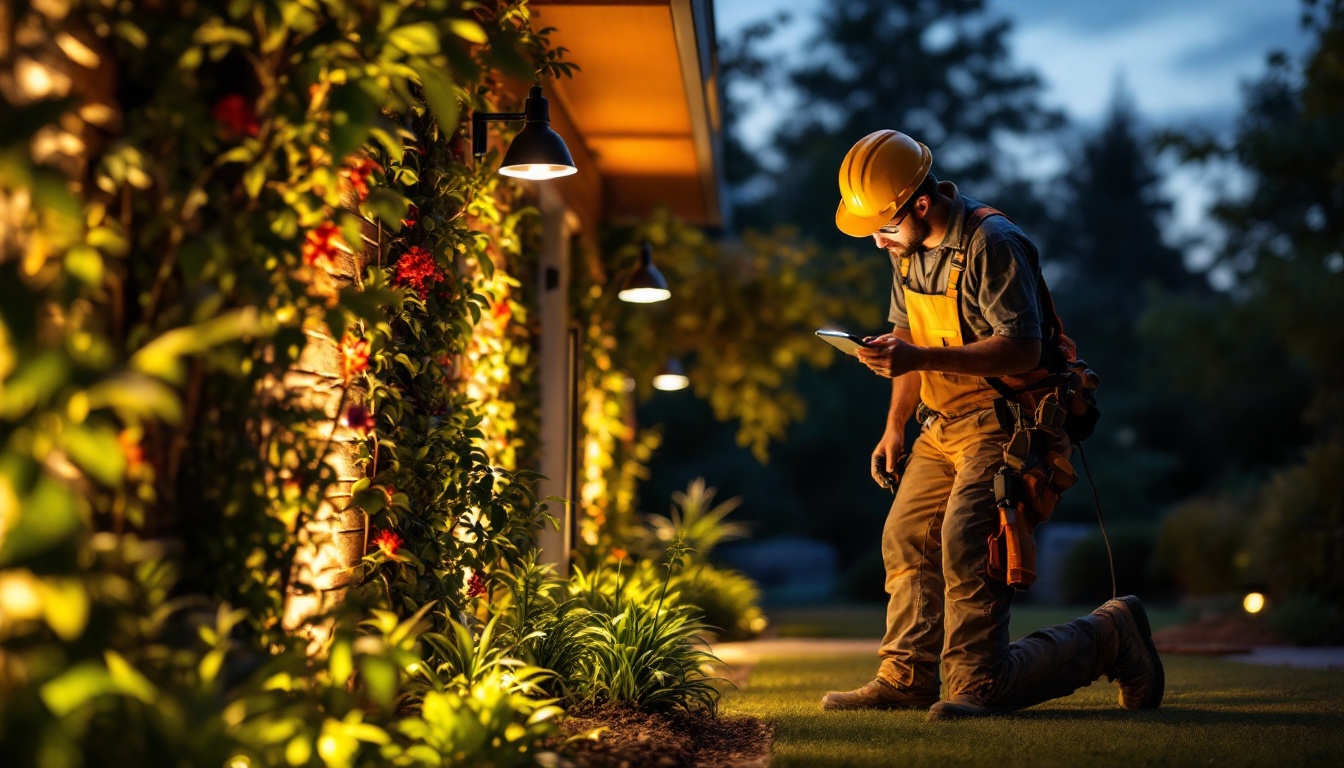
As the world of lighting continues to evolve, LED light bulbs have emerged as a game-changer for both residential and commercial applications. For lighting contractors, understanding the intricacies of LED technology is essential not only for providing the best solutions to clients but also for staying competitive in the industry. This article delves into the key aspects of LED light bulbs that every lighting contractor should be aware of, from their benefits to installation tips and future trends.
LED, or Light Emitting Diode, represents a significant advancement in lighting technology. Unlike traditional incandescent or fluorescent bulbs, LEDs convert electricity directly into light, which results in higher efficiency and lower energy consumption.
At the core of LED technology is a semiconductor material that emits light when an electric current passes through it. This process, known as electroluminescence, allows LEDs to produce light without generating excessive heat. This efficiency not only saves energy but also extends the lifespan of the bulb, making it a cost-effective choice for consumers. The simplicity of their design also means that LEDs are more compact than traditional bulbs, allowing for innovative lighting solutions in various applications, from residential to commercial settings.
For lighting contractors, the benefits of LED bulbs are manifold. First and foremost, they offer significant energy savings, often reducing electricity usage by up to 80% compared to traditional bulbs. This translates to lower utility bills for clients, making LEDs an attractive option for budget-conscious consumers. Moreover, the reduced energy consumption contributes to a smaller carbon footprint, aligning with the growing emphasis on sustainability in both personal and professional environments.
Additionally, LEDs have a longer lifespan, often lasting 25,000 hours or more. This durability reduces the frequency of replacements, which is beneficial for both contractors and their clients. Furthermore, LEDs are available in a variety of color temperatures and designs, allowing for greater flexibility in meeting aesthetic and functional lighting needs. For instance, warm white LEDs can create a cozy atmosphere in living spaces, while cooler white options are ideal for work environments that require brighter, more focused lighting. The versatility of LEDs also extends to smart lighting solutions, where they can be integrated with home automation systems, providing users with the ability to control their lighting remotely and customize settings to fit their lifestyle. This adaptability not only enhances user experience but also opens up new avenues for creative lighting design in both residential and commercial projects.
While the benefits of LED bulbs are clear, their installation requires a nuanced understanding of both the technology and the specific requirements of the project at hand. Lighting contractors must be equipped with the knowledge to ensure a seamless installation process.
One of the primary considerations when installing LED bulbs is compatibility with existing fixtures. Not all fixtures are designed to accommodate LED technology, and using an incompatible bulb can lead to performance issues or even damage. Contractors should assess the specifications of the fixtures in question and recommend suitable LED options.
In some cases, retrofitting existing fixtures may be necessary. This could involve replacing or modifying components such as dimmers, transformers, or drivers to ensure optimal performance. Understanding the electrical requirements of LED bulbs is crucial for a successful installation. Additionally, it’s important to consider the color temperature and brightness levels of the LED bulbs, as these factors can significantly impact the ambiance of the space. For instance, a warmer color temperature may be more suitable for residential settings, while cooler temperatures might be preferred in commercial environments.
Although LEDs generate less heat than traditional bulbs, effective heat management remains a critical aspect of installation. Proper ventilation and heat dissipation are essential to maintain the longevity and efficiency of LED fixtures. Contractors should ensure that fixtures are adequately rated for the LED products being used and that there is sufficient airflow to prevent overheating.
Moreover, the placement of LED fixtures can also influence heat management. For example, installing LEDs in enclosed spaces without proper ventilation can lead to increased temperatures, potentially shortening the lifespan of the bulbs. It’s advisable to conduct a thorough assessment of the installation environment, taking into account factors such as insulation, proximity to heat sources, and overall space design. By prioritizing these considerations, contractors can enhance the performance of LED installations and contribute to energy efficiency in the long run.
Energy efficiency is a primary selling point for LED technology, and as lighting contractors, it is vital to communicate this advantage to clients. The transition to LED lighting not only benefits individual consumers but also contributes to broader sustainability goals. In addition to energy savings, LEDs offer a longer lifespan, which means fewer replacements and less waste over time. This longevity is a key factor in reducing the overall environmental impact of lighting solutions, making LEDs an even more attractive option for eco-conscious clients.
By switching to LED lighting, clients can significantly reduce their carbon footprint. LEDs consume less energy, which in turn decreases the demand on power plants and reduces greenhouse gas emissions. For contractors, emphasizing the environmental benefits of LEDs can resonate well with clients who prioritize sustainability in their purchasing decisions. Furthermore, the energy savings from LED lighting can lead to substantial cost reductions on electricity bills, allowing clients to allocate those savings toward other sustainable initiatives, such as renewable energy sources or energy-efficient appliances.
Another important aspect of sustainability is the proper disposal and recycling of LED bulbs. Unlike traditional bulbs, which may contain hazardous materials, LEDs are generally safer for the environment. However, they still require responsible disposal practices. Contractors should inform clients about local recycling programs and encourage them to dispose of old bulbs properly to minimize environmental impact. Additionally, educating clients on the importance of choosing products from manufacturers that prioritize sustainable practices can further enhance their commitment to eco-friendly solutions. By opting for brands that utilize recyclable materials and environmentally responsible manufacturing processes, clients can ensure that their lighting choices align with their sustainability goals.
The LED lighting market is continually evolving, with new trends emerging that can influence how lighting contractors approach their projects. Staying informed about these trends can provide contractors with a competitive edge.
One of the most significant trends in the lighting industry is the rise of smart lighting solutions. These systems allow users to control their lighting remotely through smartphones or smart home devices, offering convenience and energy management capabilities. Contractors should familiarize themselves with the various smart LED products available and understand how to integrate them into existing systems. Furthermore, the integration of smart lighting with other smart home technologies, such as security systems and HVAC controls, can enhance the overall functionality and appeal of a home. As consumers increasingly seek seamless connectivity, contractors who can provide comprehensive smart solutions will be in high demand.
Human-centric lighting focuses on creating environments that enhance well-being and productivity. This approach considers factors such as color temperature and intensity to mimic natural light patterns. As awareness of the impact of lighting on health grows, contractors may find opportunities to incorporate human-centric designs into their projects, catering to clients looking for improved comfort and productivity. Additionally, research has shown that proper lighting can significantly affect mood and cognitive function, making it an essential consideration in workplaces, schools, and healthcare facilities. By leveraging this knowledge, contractors can position themselves as experts in creating spaces that not only look good but also promote mental and physical well-being.
Another trend gaining traction is the emphasis on energy efficiency and sustainability in lighting design. As environmental concerns become more prominent, both consumers and businesses are seeking solutions that reduce energy consumption and carbon footprints. LED technology inherently offers energy-saving benefits, but contractors can further enhance sustainability by recommending products with high energy ratings and those made from recyclable materials. Additionally, the incorporation of daylight harvesting techniques, which utilize natural light to reduce reliance on artificial lighting, can be an attractive selling point for eco-conscious clients. By staying ahead of these sustainability trends, contractors can not only help their clients save on energy costs but also contribute positively to the environment.
While the initial cost of LED bulbs may be higher than traditional options, the long-term savings and benefits often outweigh these upfront expenses. Lighting contractors should be prepared to discuss the total cost of ownership with clients, emphasizing the value of energy savings and reduced maintenance costs over time.
Many regions offer incentives and rebates for transitioning to energy-efficient lighting solutions, including LEDs. Contractors should stay informed about available programs and help clients navigate the application process. This not only enhances the value proposition but also encourages clients to make the switch to LED lighting.
When budgeting for projects that involve LED installations, contractors should account for both the cost of the bulbs and any necessary modifications to existing fixtures. By providing clients with a clear breakdown of costs and potential savings, contractors can build trust and facilitate informed decision-making.
In conclusion, LED light bulbs represent a significant advancement in lighting technology that offers numerous benefits for both contractors and clients. Understanding the intricacies of LED technology, installation considerations, energy efficiency, and emerging trends is essential for lighting contractors looking to thrive in a competitive market.
By staying informed and adapting to the evolving landscape of LED lighting, contractors can provide valuable solutions that meet the needs of their clients while also contributing to a more sustainable future. Embracing LED technology not only enhances the quality of lighting projects but also positions contractors as knowledgeable professionals in an ever-changing industry.
Ready to elevate your lighting game and pass on the savings to your clients? Look no further than LumenWholesale for all your LED lighting needs. We provide lighting contractors with the highest quality, spec-grade LED products at unbeatable wholesale prices. Say goodbye to local distributor markups and hello to a vast selection of reliable, high-performance lighting that meets the strictest industry standards. Plus, with free shipping on bulk orders, you can stock up on premium lighting solutions without worrying about hidden fees or compromises. Don’t miss out on the perfect combination of quality, affordability, and convenience. Visit LumenWholesale today and discover the best value in wholesale lighting!

Discover how outdoor lighting innovations are transforming the industry for contractors.

Discover the essential guide to work lights string, featuring top resources and expert tips for lighting contractors.

Discover effective strategies for lighting contractors to tackle common challenges in highbay lighting projects.

Discover how top lighting contractors leverage modern fluorescent colors to transform spaces.